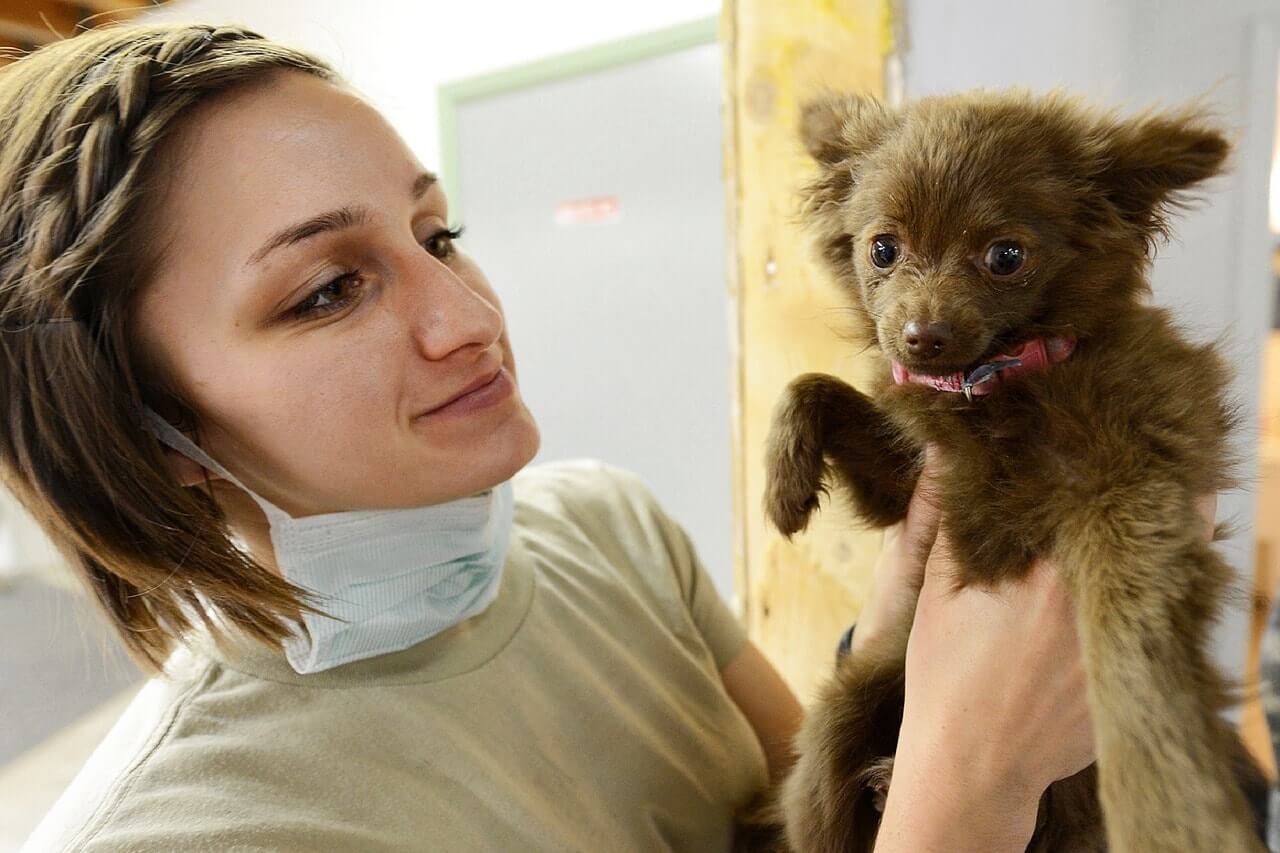Rescue organizations all over the world do their best to care for the abandoned, abused and neglected animals that find their way to the shelter doors.
Some of these pets have been through traumatic situations both physically and mentally, so it’s up to the caring and dedicated staff members to help these poor souls regain their health and their trust.
However, with soaring pet populations, many rescue organizations are overcrowded and underfunded.
This makes their jobs much more difficult.
The good news is many of the problems found in rescue pets can be easily rectified. Here is a list of the most common ailments, both physically and mentally, found in rescue dogs and cats.
Contents
Common Physical Problems Found in Rescue Dogs and Cats
The majority of pets in shelters have to deal with these ailments at one time or another. However, they are not necessarily serious and they can be cured with no long term effects.
Fleas & Ticks
These external parasites are not only common in rescue pets, but they can infest any animal (unless it has be given a flea/tick preventative).
Fleas are small, flat, brownish-colored pests that will feed off of your pet’s blood. The bites cause itching and, in some extreme cases, flea bite dermatitis which is an allergic reaction to the “toxins” the flea leaves behind in its bite.
Ticks, on the other paw, are small oval, dark-colored arachnids that bury their heads into your pet’s skin and engorge themselves on its blood. Both these pests need to be eradicated for the health of your pet and can be done so with flea and tick treatments.

Buy your Seresto® flea & tick prevention & save on every order with Auto Ship!
Intestinal Parasites
Both dogs and cats can have internal parasites. These can be transmitted through infected feces, skin contact and the mother’s milk, depending on the species of parasite. Here are the common intestinal parasites found in dogs and cats.
- Roundworm: Despite their name, roundworms are not round, but in fact resemble spaghetti. They can grow up to 3 to 4 inches long (7.6 to 10 cm) and feed off of their host’s food in the intestinal tract. Common symptoms of roundworms are diarrhea and vomiting.
- Hookworms: These worms attach themselves in the lower intestine of the pet and feed off its blood. They can be particularly dangerous in puppies and are more commonly found in the canine species.
- Tapeworms: This intestinal parasite can grow very long. If your new pet has a tapeworm you may notice rice-like segments in its feces (these are bits of the worm breaking off). Tapeworms can be caused in cats by the ingestion of an infected rodent. Dogs may get a tapeworm from swallowing an infected flea.
- Whipworms: These live in the area where the small and large intestine meet. Here the whipworms suck the blood of the host pet, commonly dogs. These worms can be picked up from the soil or from the dog grooming itself after being in contact with the parasite.
- Ringworm: Despite its name, ringworm is not a worm, but rather a skin condition. It is caused by a fungus and can be transmitted to other animals.
Most animals are checked for these intestinal parasites through the shelter, but it’s always a good idea to bring a stool sample to your vet so he or she can check for any internal parasites, then prescribe a medication if needed.

Diarrhea
Diarrhea is not uncommon in shelter animals. Most dogs and cats that end up in a rescue situation have been through tremendous stress, which can cause diarrhea.
In addition, changes in their normal diet can also cause abnormal stools. Most cases of diarrhea will clear up within a few days, but if it prolongs, or your pet is showing other signs of illness, visit your veterinarian as soon as possible.
Kennel Cough
Like a human cold, kennel cough is a viral condition that is contagious between animals. It affects the trachea and bronchial tubes, with a honking persistent cough, followed by the occasional retching. Antibiotics may be prescribed to treat this condition to prevent it from turning into pneumonia.
Even though these conditions are not usually serious if caught right away, it is always a good idea to take your newly adopted pet to a veterinarian for a thorough checkup.
Be sure to consult volunteers of the shelter to find out what problems the particular pet might have. However, as you can see from the webcam in a shelter, the pets are healthy and active:
Common Emotional Problems of Shelter Dogs and Cats
We’ve covered the physical ailments that shelter animals are exposed to, now let’s explore the emotional. These can sometimes be more difficult to treat, as there is no “magic” pill to cure an emotional or behavioral issue.
Anxiety
Some animals experience a great deal of trauma and stress, both from being removed or abandoned and from living in a shelter situation.
The strange new people, noise and smells can all contribute to fear and anxiety in cats and dogs.
These animals have no clue what has happened to the people they once knew or, perhaps, the only home they knew. It’s no wonder why they are on high alert and in stress-mode.

Most rescued pets will suffer from a degree of anxiety when you first bring them home.
Be gentle, kind and patient and allow your new furry friend to adjust to its surroundings. Pay attention to any signs of stress like cowering, hiding and hissing (in cats).
If your pet exhibits any of these symptoms of fear offer them a kind word and soft praise. Give them their own area to call their own to relax in before you give them free run of your home.
Most often, mild anxiety will fade away over time once your cat or dog gets used to you and its new situation.
Aggression Towards Other Pets
It is not uncommon for a new cat or dog to show aggression towards the resident pet and visa versa. Again, this all stems back to anxiety and, most likely, fear.
Your new pet has no idea what situation it is walking into and your resident pet is going to be “protecting” it’s own territory.
For these reasons, dogs should meet the new canine on neutral turf, preferably where they have never been before. Cats will need to be kept apart with a barrier, to make the introduction as stress-free as possible.

When looking for a new pet to adopt, ask the shelter which animals have already had a good experience with the opposite or the same species. This makes the introduction period go a lot smoother.
Eliminating in the Home
Inappropriate elimination in your home with a shelter pet may be due to several different reasons.
- Puppy isn’t housebroken: New pet parents can expect a puppy to eliminate in the home. Housebreaking a puppy takes time and patience, regardless if it came from a shelter or a breeder.
- Submissive Urination: Adult dogs that are urinating when spoken to or while feeling overwhelmed, is a common condition. These dogs may have been abused and are showing fear, while some pooches piddle out of pure excitement.
- Territorial Marking: Some adult dogs will mark their territory in the home and is done purely out of instinct. Have your pet neutered if it is not already.
- Separation Anxiety: If your new rescue pup is eliminating while you are away, it could be due to the anxiety it is experiencing by being left alone.
- Cat is not using the litter box: Cats usually don’t have a problem using a litter box; however, if yours fails to do so, try changing the type of cat litter and/or the location of the box. Cats are also very clean, so make sure the litter box is always tidy.
- Underlying Health Issues: If there seems to be no apparent reason why your pet is eliminating in your home, take him or her to the vet for a complete checkup to be sure this problem is emotional, not physical.
Give Them Time, Patience and Lots of Love
Giving a rescue pet a shot at a better life is a noble and caring deed.
Know what you are getting into with the dog or cat your decide to adopt by asking the shelter staff for all the information they have on the new pet. Once it is in your care, shower it with lots of patience and love and give it the time it needs to adjust to you and your home.
Most of these common problems found in rescue animals can be worked out very quickly, so don’t be shy about adopting a shelter dog or cat and giving it the life it deserves.

 Eesti
Eesti Русский
Русский English
English Lietuviškai
Lietuviškai Latviešu
Latviešu Română
Română македонски јазик
македонски јазик Српски језик
Српски језик Español
Español ქართული
ქართული Magyar
Magyar Hrvatski
Hrvatski Tiếng Việt
Tiếng Việt Suomi
Suomi Deutsch
Deutsch Italiano
Italiano Português
Português